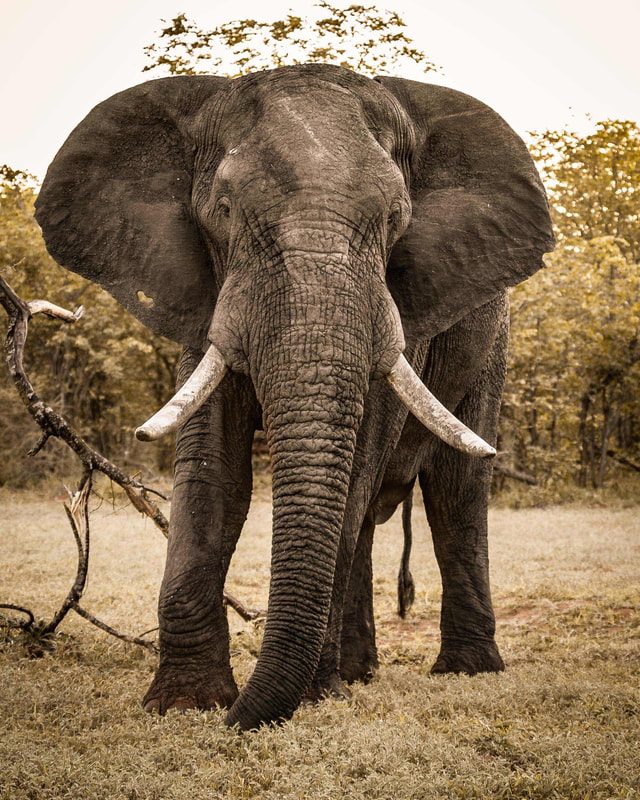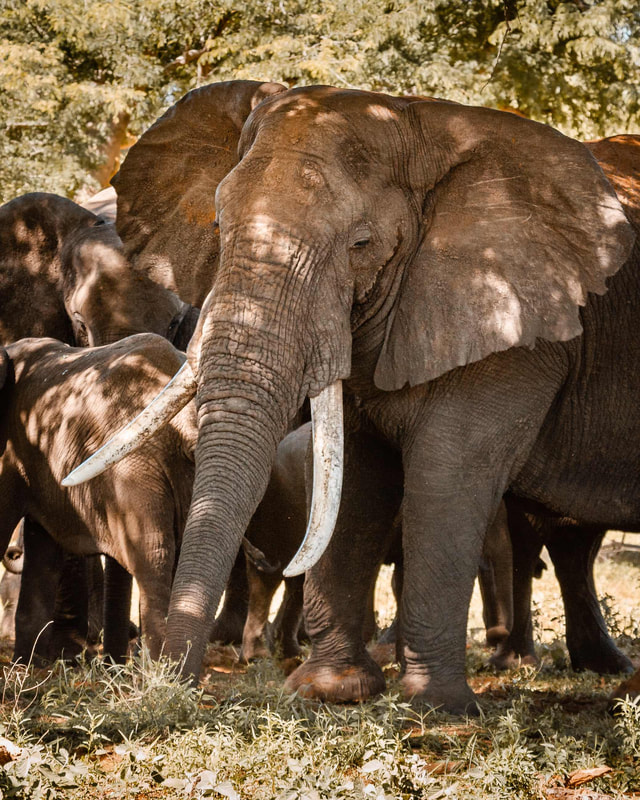What is the largest terrestrial animal?The bull elephant is the largest terrestrial animal, weighing a tremendous 6000 kilograms, and standing 3 meters high. They generally reach their full size at ages 35-40, halfway through their lifespan (60-70 years). Their tusks are large and grow 7 inches per year. I am the largest of the big five, a gentle giant until I need to defend myself or my herd. I leave my mother’s herd between the ages of 12-15. When the time comes, I may join a male herd or venture out on my own. I begin traveling far and wide in search for food, water and a mate. Some of us are introverts and prefer traveling alone, while those within the male herd prefer to depend on one another. We tend to court females using rituals which involve different affectionate gestures and nuzzles. Once I have successfully mated, I stay with the cow elephant and guard her from other males. While male elephants may not always have a mate, they still rely on bonding and need each other to survive therefore, male elephants stick together. Older males are role models to the younger ones. An article written by Lesley Evans Ogden in October 2014 stated that Joyce Pool, who was asked to study male elephant behavior, witnessed a calf watching a bull elephant as he sampled a female’s urine to determine her fertility. She observed as he stared, sniffing and reaching up to the bull and eventually copying his actions. Male elephants may not be involved in the raising of their young however, they play a significant role in the reproduction of their species. Without them the species may interbreed or go extinct. Like humans, they have complex family structures where each member is just as important as the other. What is the largest animal to roam the savannahs?The elephants, with their long trunks and hulking height, are towering over the savannas as the largest land animal in the world. However, there is more to this beast than its scale or distinctive appearance. As one of the most vulnerable species, several tests have shown a high degree of intellect and compassion for elephants. This makes it even more unfortunate that their ranks are increasingly decreasing. Taking a closer look at the greatest softies in nature with these elephant details. Do Elephants use their trunks as snorkels?Elephants will snorkel without any sort of assistance. Elephants are the only creatures that can snorkel in the animal world without any help. They can walk to the bottom of a gorge, or they can cross it fully, keeping their trunks above the water. Most animals take in oxygen by physically expanding their chests. One membrane (the visceral pleura) linked to the lungs stays put when the chest is enlarged, while the other membrane (the parietal pleura) connected to the chest wall extends laterally. The pleural cavity, the area between the lungs and the chest wall, enlarges when the lungs fill with air. By expanding the pleural space, a vacuum is created that draws air into the lungs. Elephants, which lack a pleural cavity, undergo a somewhat different procedure. Rather than relying on the diaphragm to move air, their lungs are linked directly to the chest wall, so they must use muscle to breathe. In order to breathe when submerged, the trunk is employed as a makeshift snorkel, made possible by this direct muscle control. Comments are closed.
|
Categories
All
Archives
October 2023
|




